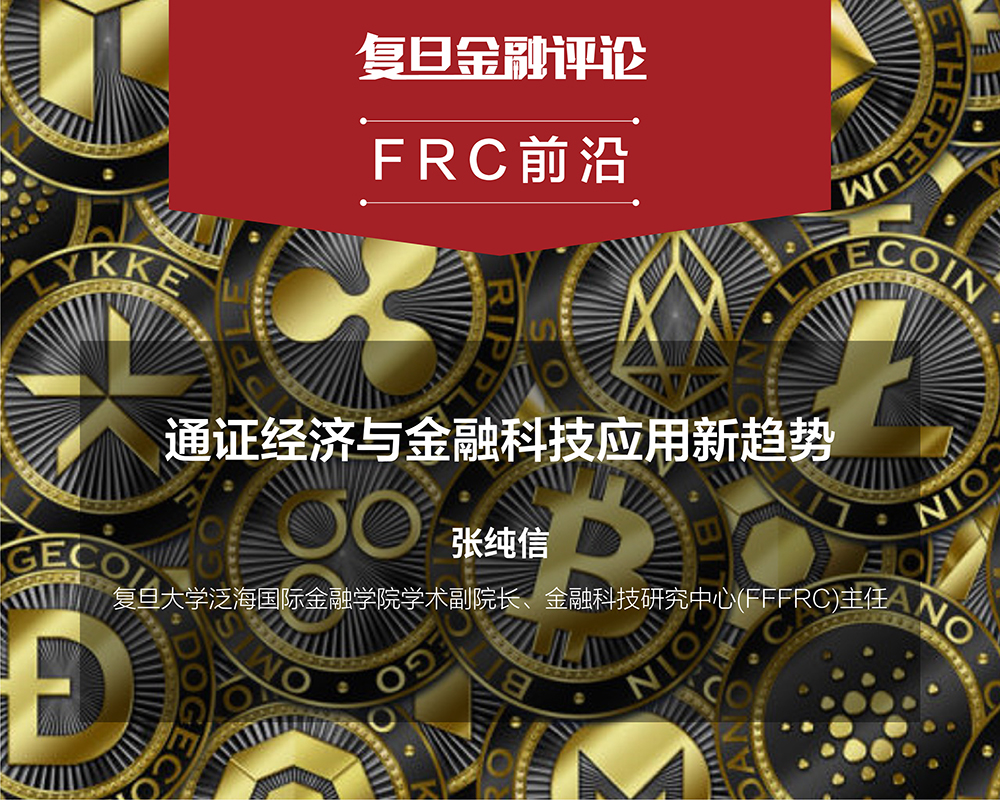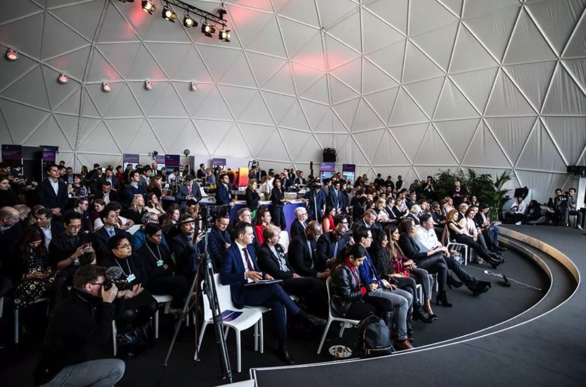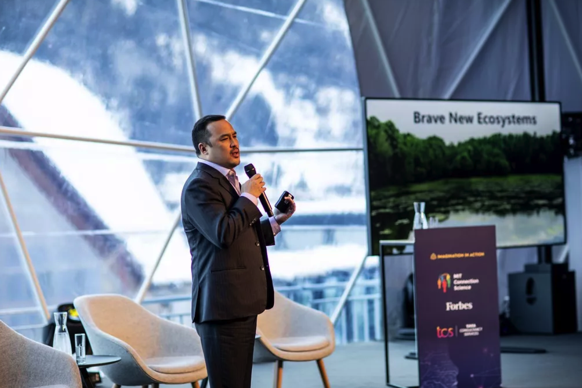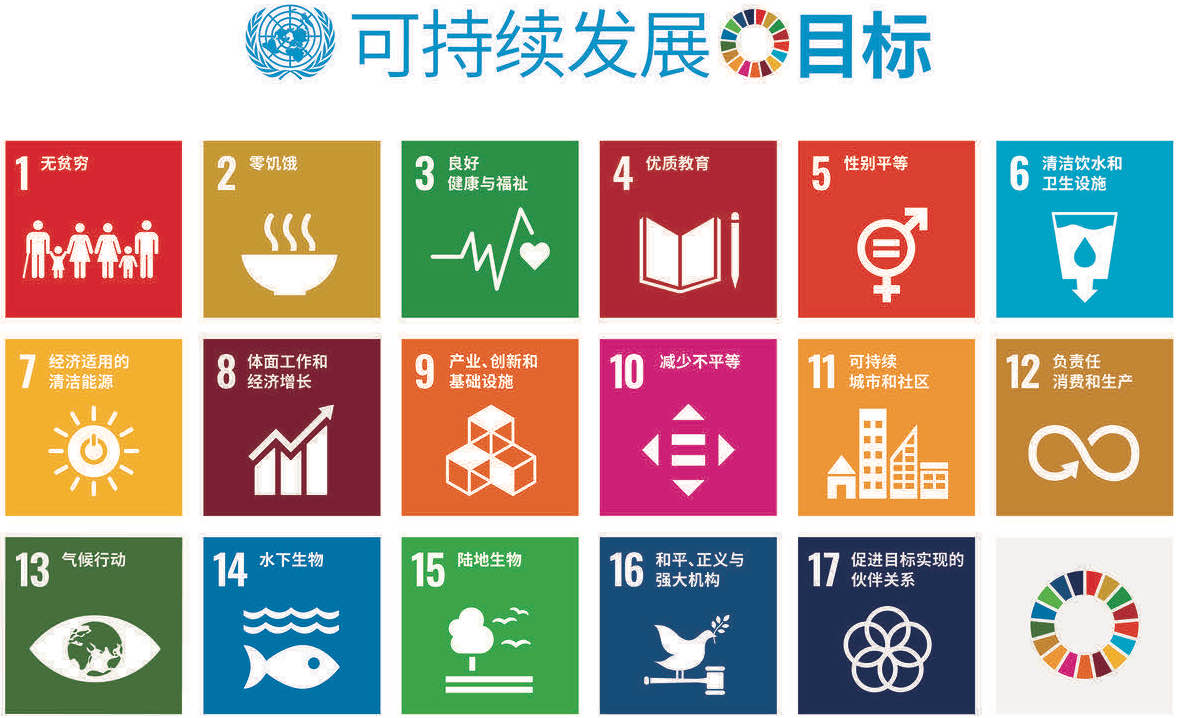通證經濟與金融科技應用新趨勢

導 語
本期前沿報告關註的話題包括中國試點央行數字貨幣“混合鏈”、通證化促進數字資產實施🏊🏻♂️🍈、金融科技賦能可持續發展、上海金融科技生態系統和社區建設、區塊鏈在公共衛生事件中的應用等👨🏽🦰。

2019年10月24日,習近平主席在中央政治局第十八次集體學習時就區塊鏈技術發展現狀和趨勢進行發表的講話極具戰略意義🧑🏻🦱。今年達沃斯世界經濟論壇的相關活動中♥️,金融科技占據了絕對的位置,中國視角也成為全球專家們最關註的話題之一。在經歷了2019年相對疲軟的狀態之後🖖🏿,證券型通證發行(STO)市場漸趨復蘇。因此,論壇圍繞各國央行對國家數字貨幣的態度、資產數字化的未來以及金融科技可能為可持續發展帶來的益處等話題展開了激烈討論。
Following President Xi’s announcements on a meeting of the Political Bureau of the CPC Central Committee, which highlighted the strategic development of Blockchain on October 24, 2020 started off with a bang as FinTech took center stage at the events surrounding WEF Davos and the China perspective being chief among topics of interest. There was much discussion surrounding the attitudes of Central Banks and national digital currencies, the future of asset digitalization in the wake of a relatively sleepy STO (Security Token Offering) market in 2019, and the potential for FinTech to do good and contribute to sustainable development.
中國試點央行數字貨幣“混合鏈”
China’s Central Bank Digital Currency in the Pipeline

習近平主席於2019年10月公開表示,中國必須在全球區塊鏈領域發揮帶頭作用。此番講話開啟了中國的區塊鏈改革的閘門,大幅加快了相關領域的發展進程。隨後,中國人民銀行(PBOC)宣布繼續開發並推行中央銀行數字貨幣(CBDC)🙋,此舉也起到了同樣的作用。全球關註區塊鏈的其他國家也對此做出了反應,比如泰國也宣布了它的央行數字貨幣,美國也加快了它在該領域的開發計劃。
President Xi publicly remarked in October that China must position itself to take a leadership role in Blockchain, unleashing the floodgates of Blockchain reform and activity that had been slowly building in China including the subsequent announcement by the People’s Bank of China (PBOC) that it is moving forward with the development and launch of its Central Bank Digital Currency (CBDC). The rest of the Blockchain world has responded in kind with countries like Thailand making CBDC announcements and the US accelerating its own plans in the area.
發行數字貨幣的中央銀行為連接實物現金結算和數字交易與資產提供了關鍵紐帶⛓️💥,從而實現了不同貨幣之間🧑🏿🦲、數字和實物之間的交換無縫對接——這或許是打通數字資產和實體貿易真正結合的最終環節。
Central Banks issuing digital currency provides the critical channel linking physical cash settlement and digital transactions/assets, allowing seamless transfers of currency and the exchange of digital-for-physical. This is potentially the final major missing link that will enable the true integration of digital assets and physical commerce.

在此方面,中國已經宣布了一個雙層體系。央行在這個體系中將繼續發揮核心作用𓀎,向下層政策性銀行推行央行數字貨幣,從而為數字化交易提供流動性。與完全去化的系統相比🧽,這種混合方案(混合鏈)可能提供了一種更實用的方法。該方法得益於區塊鏈技術的諸多優勢,同時可以使監管機構和現有金融機構有效地參與進來。據觀察,目前中國正在清理無牌照💁🏼♀️🧝🏽、無監管的參與者👨🏿✈️,以期能夠實現有秩序的寬松監管🧎🏻♀️。對於目前的大型金融機構👩🏿,特別是對於第三方支付的提供方,這是一個機會👩🎨⛴,使其能夠發展成為推廣中國央行數字貨幣的核心渠道。
China has announced a two-tier system where PBOC will continue to play a core role, pushing CBDC down through the policy banks, which in turn will provide liquidity for digital transactions. In contrast with fully decentralized systems, this hybrid option potentially delivers a more measured approach, one that benefits from the many of the advantages of Blockchain technology while also effectively engaging regulators and existing financial institutions. It appears that China is now clearing out unlicensed, unregulated players in anticipation of controlled deregulation. This is an opportunity for existing mega-players, particularly third-party payment providers, to become a core conduit for China’s CBDC to popularize.
第一波行動可能會在試驗區和經濟特區/自貿區進行試點,並且這些操作可能也會僅在國內進行🎟👩🏻⚕️。這就引出了如何進行國際結算以及如何與全球市場銜接的問題💉。整體經濟效率的真正提高將取決於這種數字資產的交易狀況和市場接受度♟。在沒有真正的資產交易時🕍,現有的超級玩家可能會扮演做市商的角色💁♂️。
The early action is likely to be in testbeds and special economic zones and is likely to remain domestic. An open question, then, is what about international settlement? True gains in the overall efficiency of the economy will rest in how well/quickly exchanges develop for the assets that the currency serves. It could be the case that existing mega-players will take on the role of market-makers in the absence of true exchanges.
通證化促進數字資產實施
Digital Assets Adoption Driven by Tokenization

作為采取資產數字化的關鍵突破,證券型通證發行(STO)的發展不容忽視🐉。在許多司法管轄區域👩🚀,尤其是經濟發達的地區,已經有現成的針對傳統資產的法律法規🪜。考慮到為投資者提供保護,部分監管機構放緩了實踐首次代幣發行(ICO)和完全去化的初衷👱🏼♂️。而證券型通證發行(STO)可借用現有的資產證券化和信托監管框架,促進數字資產發展的機會。借由這次機會,我們只需要修訂現有政策而非重新編寫。對於監管者來說🤞🏼,監管的可靠性和提供透明度的能力至關重要。回想2008年,當時信貸違約掉期(CDS)不受監管,很明顯,證券透明度和有效監管的缺乏導致了不端行為出現👳🏼♂️,投資者信心喪失🧘🏼。我們已經看到🩶9️⃣,在美國商品和期貨交易委員會(CFTC)的監管下👨🏿🚒,比特幣期貨核心數字資產的波動性已經開始降低。
One should not discount the development of STOs as a major watershed moment for digital asset adoption. In many jurisdictions, especially in developed economies, legislation and regulation already exists for traditional assets. While ICOs (Initial Coin Offerings) and the original principles of full decentralization have slowed adoption by regulators seeking to provide investor protection, STOs are an opportunity to couch the development of digital assets in existing regulatory frameworks—think revising policies rather than writing policies from scratch. This may be just the thing many economies need to jolt them into action as it’s clear that the ability to monitor and to provide transparency is important to regulators. Thinking back to the unregulated days of credit default swaps (CDS) in 2008, it’s clear that the lack of transparency in securities and of effective monitoring contributed to both bad behavior and loss of investor confidence. We have already seen that bitcoin futures, overseen by the US Commodity and Futures Trading Commission, have begun to reduce volatility in that core digital asset.
一方面🖕,在中國,核心參與者似乎已經準備好,向一個被適度監管的數字資產生態系統邁進⏪,許多區域的官方部門(包括杭州🧉、深圳)已經給出了監管沙盒提案。對於通證化的資產,尤其是以房地產為依托的通證資產👨🏿🎨,我們僅需要對現有的證券化和信托基金法規等進行修訂。另一方面⚆,若將洗錢和保護投資者作為核心問題,集中監管將是必須的🌥。因此,為了兼顧以上兩方面的發展🔖,央行針對國家數字貨幣采取雙層體系也可能作為廣泛數字資產實施方法的模板。
In China, where it appears core players are ready to move forward with a digital asset ecosystem that is inclusive of appropriate regulation, sandboxes have been proposed by a number of regional authorities, notably Hangzhou and Shenzhen. Asset-backed, tokenized assets, particularly those backed by real estate, appear to be first on the to-do list and represent a relatively small revision to existing securitization and trust-fund regulation. With money laundering and investor protection important concerns, central monitoring is going to be a must. It would not be surprising to see policy in this space to mirror the two-tiered approach taken with respect to CBDC.
金融科技賦能“一帶一路”'沿線可持續發展
FinTech Empowers Sustainable Growth along the Belt and Road

關於金融科技的發展將如何影響可持續發展,尤其是對於金融的普惠性和長期可行的經濟生態系統,討論頗多。普惠金融是聯合國17個可持續發展目標的重要內容之一,其中一個可能產生影響的領域就是使用通證化對“一帶一路”沿線的基礎設施建設項目進行分餾化操作。這些項目往往資本支出巨大且投資回報期長,這正是金融投資者不滿的原因。分餾化方法將大型資本支出分割成較小的部分👶🏼,而這些較小的資本支出至少可以部分地被當地經濟吸收😔🎻。這種方法具有諸多優勢🧑🏼✈️。
There is much discussion of how FinTech developments will impact sustainability, specifically financial inclusion and long-term viable economic ecosystems. Financial inclusion is featured prominently in the 17 United Nations Sustainable Development Goals, and one area of potential impact is the use of tokenization to fractionalize infrastructure projects along the Belt and Road. These projects tend to require large capital outlays with long-term horizons, two characteristics that are the ire of financial investors. Fractionalization provides a way to split the large capex into smaller parts that may be absorbed, at least in part, by the local economy. This has a number of advantages.
“一帶一路”沿線建設項目將促進當地的經濟增長🔱,而分餾化通過縮減最小投資的規模提供了金融普惠性👩🏻🦽➡️,使得當地居民能夠從這些經濟增長中獲益。與此同時👊🏼,分餾化有可能創造出一套新的可投資資產和急需的流動性,從而在其他可選措施缺位的情況下為人們的財富增長和保值提供工具💆🏼♀️。
Fractionalization provides for financial inclusion by reducing minimum investment size, allowing local constituencies to benefit from the resulting economic growth. At the same time, it potentially creates a new set of investable assets and much needed liquidity, providing a tool for wealth growth and preservation where few options may be available.

此外,基礎設施建設為當地經濟帶來的益處遠遠超過了項目本身的財務回報(比如創造財政收入📫、推動工業發展以及改善人們整體生活質量)🛌🏼。因此👨🏽🦱,與國外的投資者或單純的金融投資人相比,本地投資者會對項目有更高的估值,並且通常更願意長期持有這些投資。與此相反😐⚀,出於對項目時長、國家風險以及其他因素的考慮,國外的投資者會壓低對項目的估值。因此,在項目當地進行融資可以降低資本成本、改進整體股東結構,並減少項目開發人的開發風險和初始支出👨🏼🎓。
Furthermore, infrastructure delivers benefits to the local economy far in excess of the financial return of the project itself including local revenue generation, industrial development, and improvements in overall quality of people’s life. As such, local investors value the projects more dearly than financial investors and are generally willing to hold investments for longer horizons. Foreign investors discount the projects for their length, country risk, and other considerations, so financing locally lowers cost of capital, improves the overall shareholder structure, and reduces development risk and initial outlay for the project initiators.
最後,區塊鏈技術保證了財產權和代理問題(因為投資直接參與項目而不是通過中介來進行)🧑🏼⚖️⏏️,並通過應用智能合約來確保執行。在發達國家,這可能不是最關鍵的,但對於新興經濟體來說這可能是采用區塊鏈最重要的優勢🧑🏽🚒🤸🏻。
Finally, Blockchain provides assurances with respect to property rights, agency concerns (since it is a direct investment rather than executed through an intermediary), and execution through the application of smart contracts. In developed countries, this might not amount to much, but it might indeed be the most important advantage of the Blockchain approach in emerging economies.
上海金融科技發展鑄就共生生態
Spotlight: FinTech in Shanghai towards a Symbiosis

上海市政府在《加快推進上海金融科技建設實施方案》的公告中🫶🏼,將“快速改善金融科技發展環境”列為其職責📺。在呼籲加大研發力度和政策/監管改革的同時🧙🏿♂️,該方案還重視打造一個金融科技生態系統和社區,與區塊鏈和信息共享的核心原則保持一致🌃。鑒於當前上海市在金融服務方面的實力,及其蓬勃的國際影響力和資源🧭,上海應該非常適合在該領域起到帶頭作用⏪。
The Shanghai Municipal Government has joined the charge to quickly improve the environment for FinTech development in its announcement of the “Plan to Hasten the Development of the Shanghai FinTech Center”. Along with a call for increased research and development and policy/regulatory reform, the plan also calls for development a FinTech ecosystem and community, something that is consistent with the core principles underlying Blockchain and information sharing. Given its existing strength in financial services, combined with its vibrant international presence and resources, Shanghai should be well-suited to take the lead.
同樣值得我們註意的是,該方案不僅呼籲金融科技的硬件支持🩸,還倡導金融科技應用的開發👨💻,同時吸引從顧客、用戶、開發商到監管機構和傳統金融行業在內的各種利益相關者的參與。無論是“硬核”的金融科技參與者,還是金融體系內現有的大型公司🚣🏻♂️,雙方都更願意合作而非彼此競爭。而這種合作意願對於上海能否實現其長期目標至關重要。
Also noteworthy is the call for development of FinTech applications and not just hardware support as well as the engagement of a variety of stakeholders ranging from customers, users, developers, regulators, and the traditional finance industry. The willingness of the “hard-core” FinTech players to work together with, rather than compete against, existing mega-firms in the financial system and vice versa will be critical in determining whether Shanghai will achieve its long-term goals.
區塊鏈在公共衛生事件中有效落地
Blockchain Applied in Public Health

目前,新型冠狀病毒肺炎(COVID-19)的突發衛生事件暴露了一個緊迫的社會需求🫱🏽:我們需要一個經實證的、透明的、安全的、覆蓋全國(甚至全球)的信息上報系統🤸🏽♀️。由此凸顯出了一個區塊鏈技術的潛在應用場景。現行的多層級傳染病上報系統會減慢傳染病上報過程和信息聚合的效率。比如🔍,只有當傳染病案例積攢到一定數量時才能夠被國家相關主管部門註意到。同時🌋,收集來自各個地方醫院、診所的個體報告也需要時間。地方單個衛生部門的信息量有限🤦♂️👎,無法參考共享信息架構提供的大量病例樣本或綜合專業知識,因此僅能觀察到局部情況。這種局限性增加了醫生或醫院被錯誤信息誤導,而做出錯誤決定的可能性。因此,一旦上報機構或個人在被錯誤信息誤導的情況下確定或否認了疫情的出現☁️👨🏻🍳,即使是出於善意🧑💻,他們也可能會進一步誤導病情發現或加劇負面反應🏋🏿。
The current health emergency surrounding COVID-19 has highlighted a potential use-case for blockchain technology as it has highlighted the need for a nation-wide (or even global) reporting system that is validated, transparent, and secure. Existing multi-layered systems unfortunately slow reporting and information aggregation. For example, a certain number of cases must “amass” in each locality before it gets noticed by the national authority and a certain amount of time elapses before information from numerous reporting entities (hospitals/clinics/etc.) can be collected. Local health units have a limited amount of information, each seeing only a part of the picture, unable to benefit from the large sample size or combined expertise that a shared information structure would provide. Even well-intentioned, mis-informed individuals can further mislead findings or exacerbate responses once the crisis is identified.
相對於上述的現有傳染病上報及預警系統,分布式數據結構可以確保信息更快地傳播🏌🏻,從而能夠幫助更迅速地辨別疫情並采取行動🪐。此外🫳🏻,此類信息的透明性與合規性將允許多個參與者同時研究信息,從而使得人們能夠獲得更充分的信息,並有更強的信心更快地做出發布危險信號等決定。這些通過共識達成的決定將有助於在恐慌易發時期阻止錯誤或誤導信息的出現⛩。同時,因為區塊鏈系統可以提供安全性、激勵機會與認證機製,這就使得“積極行為者”能夠受到鼓勵並且“消極行為者”的負面影響被削弱🙍🏿。
A distributed data structure could ensure faster information dissemination leading to quicker identification and call to action. Further, the transparency of such information will allow multiple actors to study information simultaneously, allowing red flags to be raised more quickly with fuller information and greater confidence. Such determinations, arrived at by consensus, would help to block mis-information in a time and situation prone to panic, and a Blockchain-based system can provide both the security and incentive opportunities to encourage good actors and reduce the influence of bad ones.
這個新型的系統受益於其自身共享、分布的本質🤶🏼,同時也鼓勵醫療機構✋🏻、醫務人員、和社區成員之間的高度協作。這種混合鏈結構比私有鏈具有更高的可審計性,同時也保有了某些公有鏈難以實現的高安全性和大數據吞吐量🛜🦹🏿♀️。這樣的系統比現有的上報系統更加透明、靈活,同時也要能夠被官方積極有效地監控。
Such a system should benefit from it shared, distributed nature, encouraging a high level of collaboration between medical authorities, hospital staff, and members of the community. This kind of a hybrid chain structure delivers higher auditability than private chain while maintaining the high level of security and data throughput difficult for some public chains. Such a system would be more transparent and more flexible than the existing reporting system while being actively monitored by authorities.
*本文經原作者授權🪮,如需轉載請聯系授權並註明出處🪂。